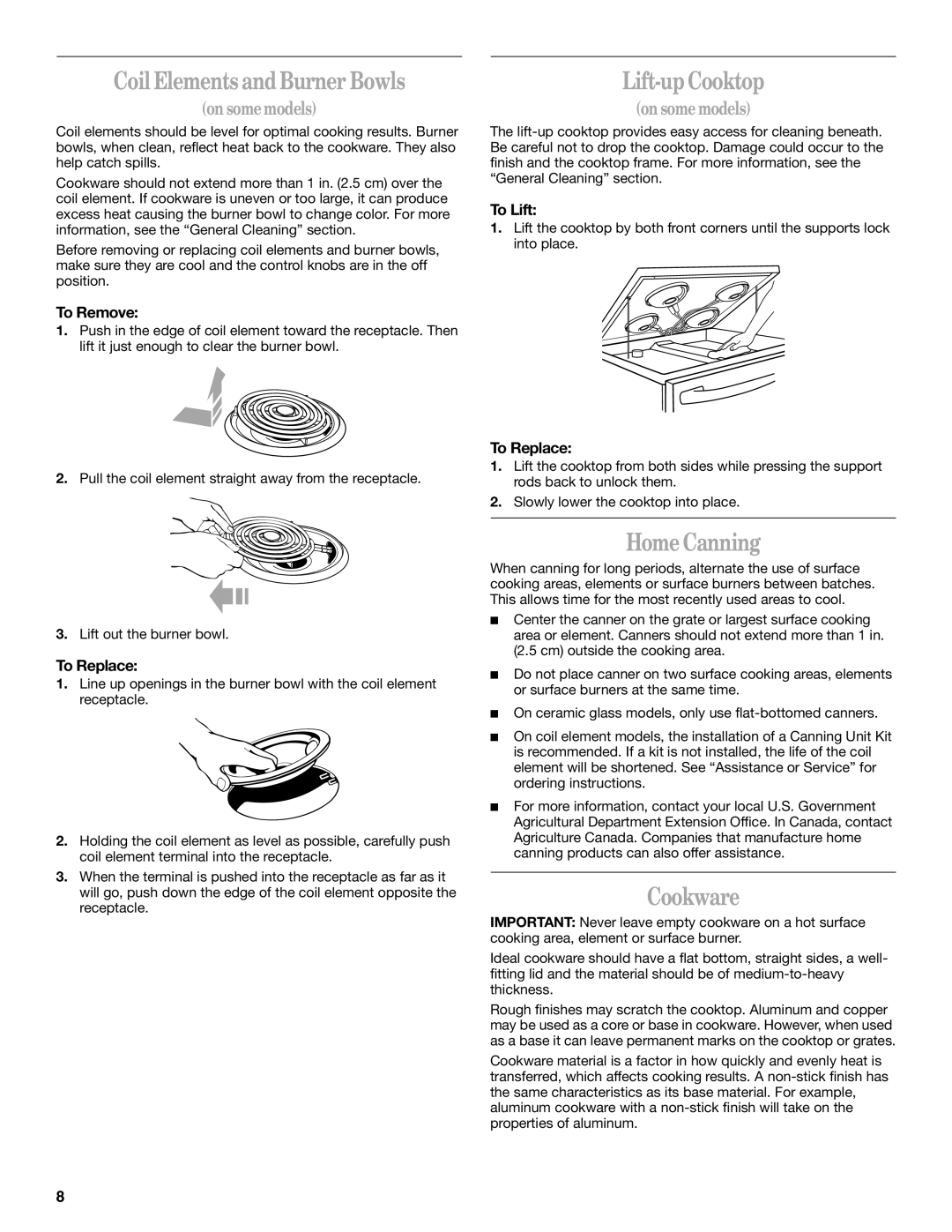RF350BXK, RF355PXK, RF362BXK, RF365PXK, RF367LXK specifications
The Whirlpool RF196LXK, RF364LXK, RF364PXK, RF368LXK, and RF367LXK are part of an innovative line of refrigerators that exemplify modern kitchen design and technology. Each model is designed to meet the diverse needs of consumers while providing efficiency, convenience, and style.One of the standout features of these models is the CapacityPlus Storage system, which maximizes interior space without compromising on the exterior dimensions. This design allows users to store larger items with ease, thanks to adjustable shelving and spacious door bins that can accommodate tall bottles and containers.
Energy efficiency is a major consideration for modern appliances, and these Whirlpool models are ENERGY STAR certified, meaning they consume less electricity compared to standard refrigerators. This not only helps reduce your carbon footprint but also saves on utility bills, making them an economical choice for environmentally conscious households.
The exterior of the RF196LXK, RF364LXK, RF364PXK, RF368LXK, and RF367LXK boasts a sleek and contemporary finish that can seamlessly blend with any kitchen decor. Available in various color options, including stainless steel, these models feature a fingerprint-resistant surface, making it easier to maintain a clean and polished look.
In terms of technology, the refrigerators are equipped with advanced cooling systems that ensure consistent temperatures throughout the unit. The Adaptive Defrost feature is a significant innovation, reducing energy usage by defrosting only when necessary rather than on a fixed schedule. This leads to improved efficiency and better food preservation.
Additionally, Whirlpool's Accu-Chill Temperature Management System is designed to detect the temperature in the refrigerator and freezer compartments, allowing for precise adjustments to maintain optimal cooling conditions. This technology helps keep food fresh for a longer period and reduces spoilage.
Furthermore, many of these models incorporate smart features such as electronic controls for easy temperature adjustment and humidity-controlled crisper drawers to prolong the freshness of fruits and vegetables. With these handy features, the Whirlpool RF line caters to users who value convenience and practicality in their daily food storage and preservation needs.
In summary, the Whirlpool RF196LXK, RF364LXK, RF364PXK, RF368LXK, and RF367LXK refrigerators symbolize a harmonious blend of functionality and style. Through their thoughtful design, energy-saving technologies, and superior food preservation capabilities, these models stand out as excellent choices for consumers seeking reliable and aesthetically pleasing kitchen appliances.

